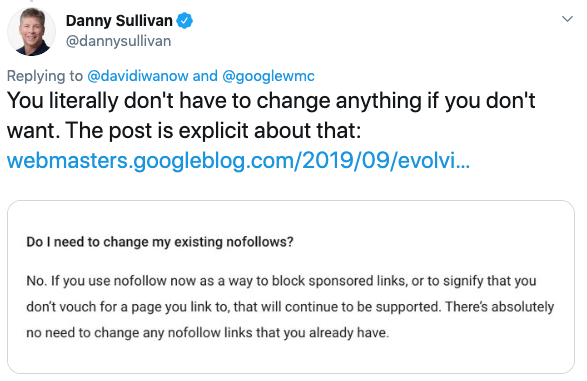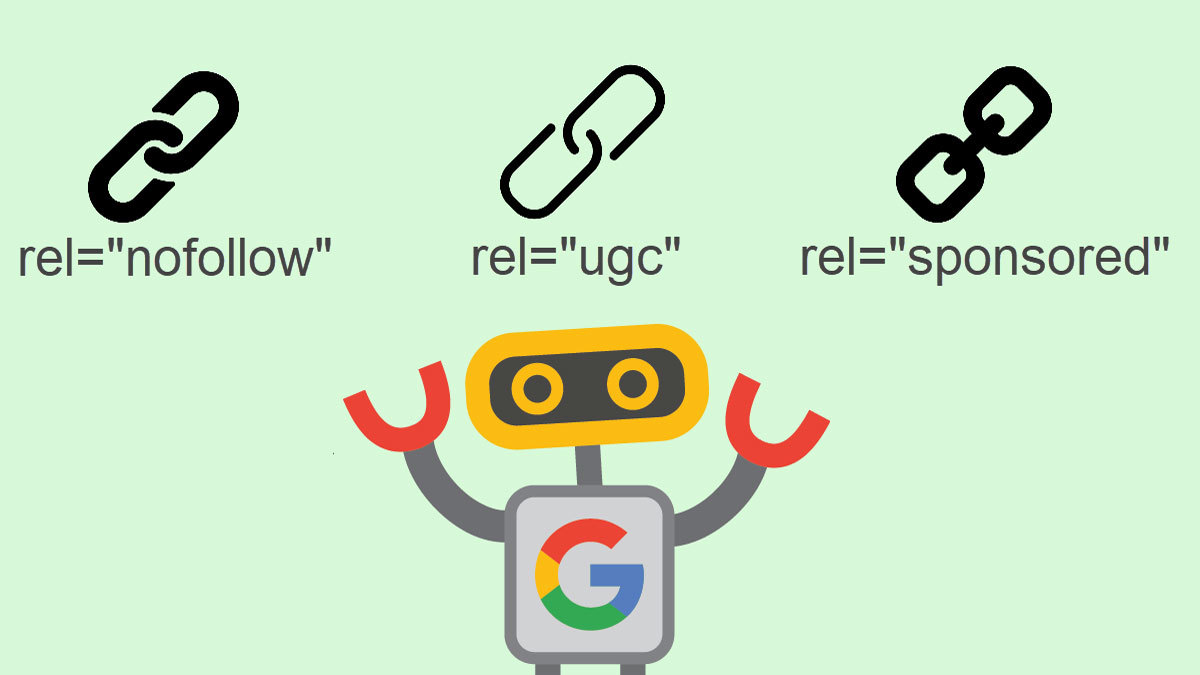Google introduced the rel=”nofollow” 15 years ago to fight the menace of webspam but as notified six months back, Google officially ended supporting rel=”nofollow” directive in the robots.txt file starting September 1, 2019.
Started to fight spam, the nofollow attribute could be used for any link you don’t want Google to count that gave us the freedom to handle how paid links can affect rankings in the search result pages. In the official announcement, the search giant made it clear that the evolution of nofollow link attribute is a necessity to keep the web results relevant.
What followed next was another revelation by Google on September 10, 2019, that the nofollow will now be used as a ‘hint’ for ranking purpose. On the official blog, Google published a detailed review titled “Evolving “nofollow” – new ways to identify the nature of links” in which it was clearly indicated that now Google will crawl the text marked nofollow, see the anchor text and links and use the information for spam or ranking purposes as it seems necessary. However, this functionality will still not be placed into use until March 1, 2020.
Therefore if you are using ‘nofollow’ link attribute in robots.txt file you need to change your approach and make use of more refined, newly introduced link attributes.
New link attributes in town- rel=”sponsored” and rel=”ugc”.
The evolving ‘nofollow’ link announcement also introduced two more refined attributes that will help Google better understand the content and improve search rankings.
The newly introduced link attributes are Sponsored, for handling the paid content and UGC to make better sense of the user-generated content such as blog comments, forum posts, etc.
The introduction of the new attributes makes it obvious that Google is having a hard time determining the nature of the links and is now seeking the help of the SEO community to improve its search quality and fight spam.
According to Google, “Using the new attributes allows us to better process links for analysis of the web. That can include your own content if people who link to you make use of these attributes.”
From March 1, you can see an improvement in your search rankings for using nofollow as rightly used link attributes will present your website is a quality asset. The search giant also quoted:
“When nofollow was introduced, Google would not count any link marked this way as a signal to use within our search algorithms. This has now changed. All the link attributes – sponsored, UGC and nofollow – are treated as hints about which links to consider or exclude within Search.”
That being said, the new link attributes i.e. rel=”sponsored” and rel=”ugc” are already used for the ranking purposes only, rel=”nofollow” link attribute handling will change from March 1, 2020.
Although, using nofollow in the robots.txt was never a foolproof method ever as some of the search engines apart from Google were known to skip the directive. But now, you have a more refined method to help Google further refine the results.
“You don’t need to make any changes”, Google
Ever since Google announced that it will be depreciating rel=”nofollow” in the robots.txt file, there has been a lot of confusion among webmasters regarding the fate of their content. But there is no reason for you to grow anxious, as Danny Sullivan from Google explicitly said that there is no need to make any changes to the existing nofollow links as there will not be any noticeable difference in search rankings.

Coming to the important questions now:
When to use rel=”sponsored”?
This link attribute has a self-explanatory title. It is to be used for any content that has been paid for in one way or the other. Advertorials, products reviews on brand demand, paid promotion, influencer branding, etc. all fall under the sponsored category.
If you are posting any such content now, don’t forget to use the rel=”sponsored” attribute.
When to use rel=”ugc”?
All user generated content should now have the rel=”ugc” link attribute to address the links generated in their content. This will help Google to understand that the link has been generated by a third party and your website or content has no affiliation with it.
We are not yet clear where the content from contributors to websites like Search Engine Journal and Forbes stands right now, but from the look of it, all the contributed content from third parties can use rel=”ugc” link attribute.
What we can recommend you right now, is to use this new link attribute for:
Links in blog comments
Forum post links and signatures
Links on content curation platforms like HackerNews, Reddit and Quora
The Big Question-How To Use Rel=”Nofollow” Now?
Nofollow attribute is made optional now as the rel=”sponsored” and rel=”ugc” are more evolved and refined versions of the same, but in case you want to rel=”nofollow” as a fallback you can use it with care.
You can use the nofollow link attribute for content such as stories about someone you do not want to credit, widget links, sports score sites, etc.
Why rel=”nofollow” switched to hint from a directive?
One of the major challenges for Google when handling nofollow links of some large sites is that some of the publishers made all the outgoing links in their content nofollow in an attempt to prevent their editors from selling links on the site. But this might have impacted Google’s ability to determine what pages to rank where. This may be one of the reasons why Google took a more granular approach towards nofollow links.
But we don’t think many publishers will adopt the new link attributes. We are not being skeptical but practically there is no incentive for publishers to use these attributes. It only leads to more work, unless in the future we see a bigger incentive it is hard to say that many publishers will adopt rel=”sponsored” and rel=”ugc”.
Do you have to update current rel=”nofollow” link attribute?
According to Google, there is no need and we agree.
Why go through all the trouble when you can utilize your time creating content that can help your business and service. But there’s a chance once Google’s intelligent machine learning algorithms figure out a way to make more sense of the links, the use of these hints will become irrelevant.

